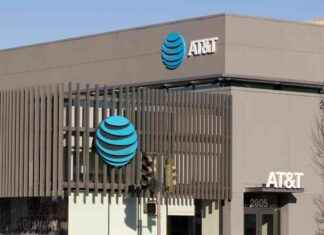Pace University plans to spend $190 million to transform its fortresslike campus to better connect students with the surrounding city and draw attention to the school’s streak of growth.
School officials say Pace plans to renovate 1 Pace Plaza, its flagship campus complex just south of the entrance to the Brooklyn Bridge. Clad with an imposing concrete façade, the building hearkens back to a time when institutions sought to wall themselves off from the city’s gritty streets.
“When 1 Pace Plaza was built in the 1960s, it was a turbulent time, and the architecture was designed to screen out the city and make it a haven inside a shell,” said Stephen Friedman, Pace’s president. “What has happened since then is lower Manhattan has become this incredible area.”
article continues below advertisement
The project also highlights the rapid growth of the university, which has had a streak of academic success in recent years. The student body at its lower Manhattan campus has grown by more than 500% since 2000, and the school recently placed second nationally in a survey that measured the upward mobility of its grads.
The project will start with about $45 million of improvements to the lower floors of 1 Pace Plaza and a neighboring property, 41 Park Row. Because the 13-story office building at 41 Park Row is a landmark, Pace must first receive permission from the city’s Landmarks Preservation Commission for what it says will be modest changes to the exterior at the base of the property, such as relocating its main entrance from Park Row to Spruce Street. The school plans to file its application with the commission on Thursday, Friedman said.
In a second, more-expensive phase, Pace plans to add two floors of academic space on top of the western half of 1 Pace Plaza, creating 67,000 square feet that will be used in part by its Lubin School of Business. The school has hired architecture firm FXFowle to design the upgrades and expects to begin the project by the end of the year.
The initial phase of the work will reorganize student life at the buildings and better connect it to the surrounding streetscape. For instance, a cluster of administrative offices near the front entrance of 1 Pace Plaza will be replaced with a welcome center and a student union. New glass walls will be installed facing Frankfort and Spruce streets on the perimeter of the block-sized building—replacing tinted panes with clear glass panels that offer a glimpse inside to passers-by.
“We want people to know that there are exciting things happening here, and we want to bring student life here into view,” said Jean Gallagher, a vice president at the university, who is helping to oversee the renovation project.
The school plans to relocate a Barnes & Noble campus bookstore on the ground floor of 41 Park Row into 1 Pace Plaza, replacing the old space with an art gallery that will feature work from students and faculty from its Dyson College of Arts and Sciences.
“The gallery is a great opportunity to activate the space and showcase our creativity to a neighborhood that has become more diverse,” Gallagher said.
Friedman, who plans to retire from his post as president in May after a decade in the position, said work on the first phase will begin by the end of the year and take about a year to complete. Afterward, the school will begin planning the second phase. Friedman said Pace has raised about $100 million from the sales of the Briarcliff Manor campus in Westchester it previously operated and a dormitory building at 106 Fulton St., as well as having funds given years ago by Joseph Lubin, for whom its business school is named.
“We’re planning to raise the additional money needed for the work,” Friedman said.
Pace University plans to spend $190 million to transform its fortresslike campus to better connect students with the surrounding city and draw attention to the school’s streak of growth.
School officials say Pace plans to renovate 1 Pace Plaza, its flagship campus complex just south of the entrance to the Brooklyn Bridge. Clad with an imposing concrete façade, the building hearkens back to a time when institutions sought to wall themselves off from the city’s gritty streets.
“When 1 Pace Plaza was built in the 1960s, it was a turbulent time, and the architecture was designed to screen out the city and make it a haven inside a shell,” said Stephen Friedman, Pace’s president. “What has happened since then is lower Manhattan has become this incredible area.”
The project also highlights the rapid growth of the university, which has had a streak of academic success in recent years. The student body at its lower Manhattan campus has grown by more than 500% since 2000, and the school recently placed second nationally in a survey that measured the upward mobility of its grads.
The project will start with about $45 million of improvements to the lower floors of 1 Pace Plaza and a neighboring property, 41 Park Row. Because the 13-story office building at 41 Park Row is a landmark, Pace must first receive permission from the city’s Landmarks Preservation Commission for what it says will be modest changes to the exterior at the base of the property, such as relocating its main entrance from Park Row to Spruce Street. The school plans to file its application with the commission on Thursday, Friedman said.
In a second, more-expensive phase, Pace plans to add two floors of academic space on top of the western half of 1 Pace Plaza, creating 67,000 square feet that will be used in part by its Lubin School of Business. The school has hired architecture firm FXFowle to design the upgrades and expects to begin the project by the end of the year.
The initial phase of the work will reorganize student life at the buildings and better connect it to the surrounding streetscape. For instance, a cluster of administrative offices near the front entrance of 1 Pace Plaza will be replaced with a welcome center and a student union. New glass walls will be installed facing Frankfort and Spruce streets on the perimeter of the block-sized building—replacing tinted panes with clear glass panels that offer a glimpse inside to passers-by.
“We want people to know that there are exciting things happening here, and we want to bring student life here into view,” said Jean Gallagher, a vice president at the university, who is helping to oversee the renovation project.
The school plans to relocate a Barnes & Noble campus bookstore on the ground floor of 41 Park Row into 1 Pace Plaza, replacing the old space with an art gallery that will feature work from students and faculty from its Dyson College of Arts and Sciences.
“The gallery is a great opportunity to activate the space and showcase our creativity to a neighborhood that has become more diverse,” Gallagher said.
Friedman, who plans to retire from his post as president in May after a decade in the position, said work on the first phase will begin by the end of the year and take about a year to complete. Afterward, the school will begin planning the second phase. Friedman said Pace has raised about $100 million from the sales of the Briarcliff Manor campus in Westchester it previously operated and a dormitory building at 106 Fulton St., as well as having funds given years ago by Joseph Lubin, for whom its business school is named.
“We’re planning to raise the additional money needed for the work,” Friedman said.
Sign up for our FREE daily Real Estate Alert email newsletter. The day’s top commercial real estate news, transactions and executive moves.
More Newsletters ›
Our editors found this article on this site using Google and regenerated it for our readers.







